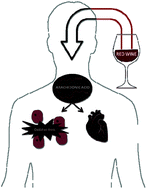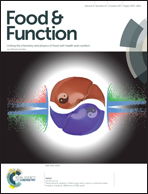Effect of the dietary intake of melatonin- and hydroxytyrosol-rich wines by healthy female volunteers on the systemic lipidomic-related oxylipins
Abstract
Oxylipins are lipid mediators involved in the physiopathology of all organs. Moreover, isoprostanes have been established as general and reliable in vivo oxidative stress biomarkers. Red wine has proved to exert several benefits through the maintenance of the oxidative balance of the organism. Antiradical scavenging capacity has been mainly attributed to polyphenols. However, melatonin and hydroxytyrosol should be taken into account as potent antiradical agents. The present research aimed to clarify the situation of enzymatic and oxidative injury and eicosanoid urinary excretion related to the intake of three kinds of red wines and their primary musts. Judging by the reduction in the excretion of isoprostanes, red wine consumption exhibited the highest antioxidant protection against oxidative stress, attributed to its OHTyr content (p < 0.05), and to a lesser extent to its MEL content. Similarly, the intake of red wine leads to the cardioprotective effect due to the reduction in the urinary excretion of the pro-inflammatory prostaglandin 2,3-dinor-11-β-PGF2α, besides the increase in the vasodilator prostaglandin PGE1, mediated by the melatonin (p < 0.05) and hydroxytyrosol (p < 0.05) contents. In conclusion, red wine (especially non-aged wine) exerts a higher in vivo antioxidant capacity than must or alcohol.



 Please wait while we load your content...
Please wait while we load your content...